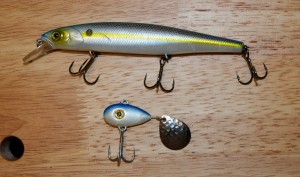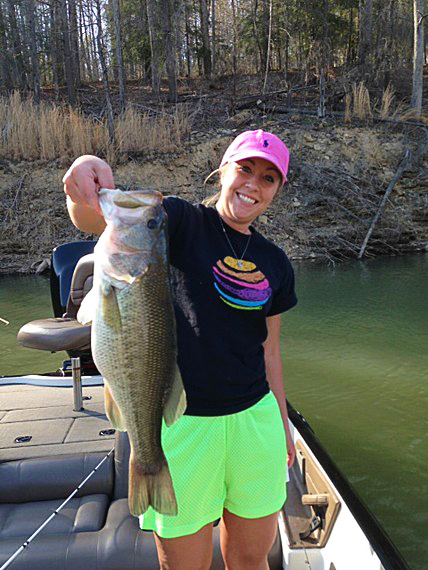By Chris Erwin
It’s common knowledge that Dale Hollow is a smallmouth lake that has few equals. Fishing this lake through the winter months has always been productive.
This is due to a few factors that many anglers take advantage of. The water in Dale is warmer than many lakes in Kentucky due to its sheer volume, with water depths averaging over 80 ft. – about three times as deep as most lakes in our state – the temperature on Dale this winter stayed in the 50-degree range, only dropping below that for a few short periods. Most of the winter on sunny days, the water temperature would hit the 55-degree mark.
This alone is enough to send many anglers to the lake that holds the world record smallmouth bass. Today, I have a treat for any of you that have thought that you too would like to try Dale Hollow but may be wondering just how these other anglers have had so much success on this lake.

While there are many ways to catch these fish, I want to share with you a story and a few tips from two anglers who have boated 20 to 30 smallmouth a trip all winter for the last few years.
Kevin Mullins and Scott Burnett, both of Grayson, have developed a method of finding and catching smallmouth that has paid big dividends.
To begin with, let’s cover the tackle they are using. Each uses seven foot bait casting rigs with eight-pound fluorocarbon line and two primary baits: Little George and the Jackall Squad Minnow.
The Jackall is a jerkbait that will suspend once under the water, much like the Rouge. This bait is used on points early in the morning. It’s the way Mullins told me he started the day. But it’s the Little George that has been the real McCoy, and is credited for most of the fish they have been catching in the afternoon and early evening.
I know that most of the anglers that fish Dale in the winter locate shad and fish under them, so that was my first question to the pair. Mullins told me that shad played a big part in their pattern, but there was more to it than that. They move slowly into the coves watching the surface and their fish finder looking for shad, Mullins said. He noted that this year the fish stayed about half-way back into the coves, and while they could see them on the fish finder, many times they could also see them rolling up in a ball near the surface.

Some of their fish were taken right under the shad. However, most were taken from the closest shade, sometimes all the way on the opposite bank, according to Mullins. The sunny areas were the warm places to fish, but it wasn’t where the active fish wanted to be. They were in the shade areas near the schooling shad.
Once they found the shad they would drop the Little George or cast it in the shad areas. They used a drop and lift motion while watching and playing close attention to the line. “On the fall back,” Mullins explained, “many times all you would feel is a tick much like a crappie bite. You need to set the hook right then, not waiting or getting into a feeling contest, just set the hook quick.”
It’s not too late to get in on this method if you give it a try let us know how you did.
Till Next Time,
Good Fishing!




Be the first to comment